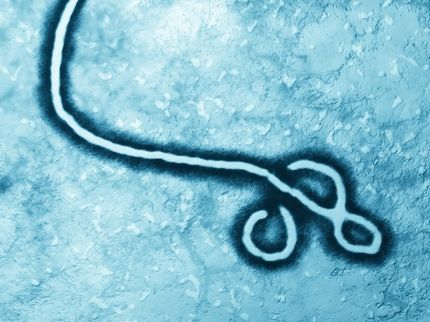Understanding the evolution of viruses
Key step in the evolutionary history of viruses in a laboratory experiment recreated
viruses have always had a major influence on life. They emerged a few billion years ago, precisely when is difficult to estimate. There are also several theories as to how viruses originated. While exploring one possibility, researchers at ETH Zurich have managed to recapitulate a potentially pivotal stage in virus evolution in the lab: the creation of a virus-like protein container capable of storing its own genetic information.

A hollow protein shell (top left) that occurs naturally in bacteria was evolved in the laboratory into a capsid structure (right) capable of storing RNA.
ETH Zürich / Stephan Tetter
In simple terms, viruses are made up of genetic material (RNA or DNA) wrapped in a protein shell. The purpose of the capsid is to protect the genetic material from environmental influences and to aid propagation. Success in storing the genetic material hinges on parts of the capsid being able to accurately recognise the viral genetic material and bind to it according to the lock-and-key principle.
Mutation and selection
Researchers led by Donald Hilvert, Professor Emeritus in the Department of Chemistry and Applied Biosciences at ETH Zurich, have succeeded in altering a bacterial protein to acquire this capability. The researchers used a protein found in the thermophilic bacterium Aquifex aeolicus. In the bacteria, 60 copies of this protein naturally assemble into tiny, geometrically regular, 12-sided particles. Their job is to make sure that a specific biochemical reaction takes place efficiently. “These bacterial capsids look a lot like virus shells, except they don’t interact with RNA,” Hilvert explains.
To ensure that the capsid proteins do just that, he and his colleagues used genetic engineering to modify the protein so that it can to bind to any RNA molecules they chose. They subsequently carried out an evolution experiment in the laboratory to optimize the system, subjecting it to several rounds of random genetic modification and appropriate selection pressure. The end result was a capsid that specifically enveloped the target RNA molecule.
In this way, the scientists succeeded for the first time in producing a protein container that efficiently packages its own messenger RNA in its interior. The resulting capsule was larger than the original, containing 240 proteins that self-assembled into a geometrically regular shell with 42 faces. Moreover, each particle contained two or three messenger RNA molecules. The researchers, together with colleagues from the Universities of Leeds and York, subsequently showed that the RNA cargo had also changed its three-dimensional structure in the evolution experiments, enabling a packaging mechanism common to many natural virus families.
A wide range of applications
“In the lab, we were able to show that an RNA molecule and the non-viral protein it encodes can be altered to produce capsids that efficiently package RNA,” Hilvert says. “This could be similar to the way RNA viruses evolved billions of years ago.” One theory about the evolution of viruses holds that they originated in biological cells and that the first viruses recruited proteins from their host cell to protect and propagate their genome.
There are still many unanswered questions for the researchers to tackle on the way to fully understanding how viruses came to exist. For example, they wish to investigate how such capsids might have evolved to be able to escape from one cell, invade another, and there release their genetic material.
This research has significance beyond explaining virus evolution. The development of virus-like particles is an important research area with a wide range of applications. This involves the development of artificial capsids that can carry their RNA or DNA cargo into biological cells. Applications could include vaccines, cell therapy and drug delivery.























































